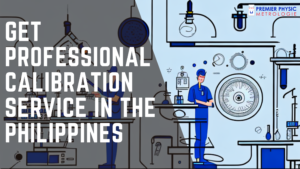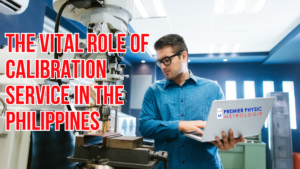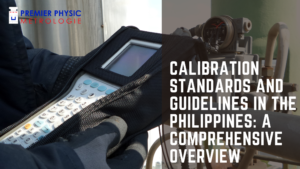In the relentless pursuit of progress that defines the technology sector, innovation reigns supreme. From the intricate dance of electrons in microprocessors to the seamless connectivity of global networks, and the precise measurements underpinning scientific breakthroughs, the technological landscape is built upon a foundation of accuracy and reliability. Often operating behind the scenes, yet utterly indispensable, lies the discipline of calibration.
Calibration, the process of comparing a measurement device against a known standard to ensure its accuracy, might seem like a meticulous and perhaps even mundane task. However, within the dynamic realm of technology, calibration acts as a critical catalyst, a silent enabler that fuels innovation across a vast spectrum of industries. Without precise and trustworthy measurements, the very advancements that define the technological frontier – from artificial intelligence and quantum computing to advanced manufacturing and biotechnology – would be fundamentally compromised, their potential stunted by uncertainty and error.
This comprehensive exploration delves into the profound and often underestimated impact of calibration on innovation within the technology sector. We will unravel how meticulous attention to measurement accuracy drives breakthroughs, fosters reliability in cutting-edge applications, underpins the development of groundbreaking technologies, and ultimately accelerates the pace of innovation itself. From the micro to the macro, across diverse technological domains, we will illuminate why calibration is not merely a necessary procedure but an essential engine driving the future of technological advancement.
The Foundational Role of Calibration in Technological Advancement
Innovation in the technology sector thrives on pushing boundaries, exploring the unknown, and translating theoretical concepts into tangible realities. This process inherently relies on precise measurement at every stage, from fundamental research and development to manufacturing and quality control. Calibration provides the bedrock of this accuracy, ensuring that the tools and instruments used to measure, analyze, and control technological processes yield reliable and trustworthy data.
- Ensuring Accuracy in Research and Development: The initial stages of technological innovation are often characterized by intensive research and experimentation. Scientists and engineers rely on calibrated instruments to measure physical properties, analyze experimental data, and validate theoretical models. Accurate measurements are crucial for drawing meaningful conclusions, identifying promising avenues of research, and avoiding costly errors or false positives that can derail innovation.
- Maintaining Reliability in Complex Systems: Modern technologies, from sophisticated medical devices to intricate aerospace systems, are composed of numerous interconnected components that must operate with unwavering reliability. Calibration ensures that the sensors, actuators, and control systems within these complex systems function within their specified tolerances, guaranteeing their performance and safety. This reliability is paramount for the widespread adoption and trust in innovative technologies.
- Underpinning Precision Manufacturing: The manufacturing of advanced technological products, such as semiconductors, microelectronics, and precision instruments, demands extremely tight tolerances and meticulous control over every stage of the production process. Calibrated measurement equipment is essential for ensuring the dimensional accuracy, material properties, and performance characteristics of these products, enabling the consistent and high-quality output that drives technological progress.
- Facilitating Interoperability and Standardization: In an increasingly interconnected world, the interoperability of technological systems and the adherence to industry standards are crucial for seamless integration and widespread adoption of new technologies. Calibration plays a vital role in ensuring that measurement devices across different manufacturers and locations provide consistent and comparable data, facilitating the development and implementation of universal standards that drive innovation on a global scale.
- Driving Advancement in Emerging Fields: The cutting edge of technological innovation, encompassing fields like artificial intelligence, quantum computing, nanotechnology, and biotechnology, often involves measurements at unprecedented levels of precision and sensitivity. Highly specialized and meticulously calibrated instruments are essential for pushing the boundaries of these fields, enabling researchers and engineers to explore new phenomena, manipulate matter at the atomic level, and develop revolutionary technologies.
In essence, calibration acts as the silent guardian of accuracy within the technology sector, providing the trustworthy measurements that underpin scientific discovery, engineering precision, and the reliable operation of complex systems – all of which are fundamental drivers of technological innovation.
Calibration’s Direct Impact on Key Areas of Technological Innovation
The influence of calibration permeates virtually every facet of technological innovation. Let’s examine its direct impact on some key areas that are shaping the future:
1. Artificial Intelligence (AI) and Machine Learning (ML):
- Data Accuracy for Training Models: The performance of AI and ML algorithms is heavily reliant on the quality and accuracy of the data used to train them. Calibrated sensors and measurement systems ensure that the data fed into these models is reliable and free from systematic errors, leading to more accurate predictions, robust performance, and trustworthy AI applications.
- Precision in Robotics and Automation: In robotics and automated systems, calibrated sensors provide the precise feedback necessary for accurate motion control, object recognition, and task execution. This precision is crucial for the development of advanced robots capable of performing complex tasks in manufacturing, healthcare, and other critical sectors.
- Reliability in Autonomous Systems: The safety and reliability of autonomous vehicles and other autonomous systems depend on the accurate and consistent measurements provided by calibrated sensors such as LiDAR, radar, and cameras. Precise calibration ensures that these systems can perceive their environment accurately and make safe and reliable decisions.
2. Quantum Computing:
- Extreme Precision in Quantum Measurement: Quantum computing relies on manipulating and measuring the delicate states of qubits. Extremely precise and highly calibrated instruments are essential for preparing, controlling, and reading out these quantum states with the fidelity required for complex computations.
- Characterization of Quantum Devices: The development and optimization of quantum processors and other quantum hardware necessitate precise characterization of their properties. Calibrated measurement equipment is crucial for accurately assessing the performance and identifying limitations of these novel devices.
3. Advanced Manufacturing:
- Dimensional Accuracy and Tolerance Control: In advanced manufacturing processes like additive manufacturing (3D printing) and precision machining, calibrated measurement instruments (e.g., coordinate measuring machines, laser scanners) are essential for ensuring that manufactured parts meet stringent dimensional tolerances and quality standards.
- Process Control and Optimization: Calibrated sensors and control systems provide real-time feedback on critical process parameters such as temperature, pressure, and flow rate, enabling precise control and optimization of manufacturing processes for improved efficiency and product quality.
- Materials Science and Characterization: The development of new materials with enhanced properties relies on accurate measurement and characterization of their physical, chemical, and mechanical properties using calibrated instruments.
4. Biotechnology and Healthcare:
- Accuracy in Medical Diagnostics: Calibrated medical devices and diagnostic instruments (e.g., blood analyzers, imaging equipment) are paramount for providing accurate and reliable diagnoses, ensuring patient safety and effective treatment.
- Precision in Drug Development and Manufacturing: The development and manufacturing of pharmaceuticals and biopharmaceuticals require precise measurement of chemical concentrations, temperatures, and other critical parameters to ensure product efficacy and safety. Calibrated analytical instruments are essential throughout the drug lifecycle.
- Reliability in Biometric Systems: Biometric technologies used for identification and security rely on calibrated sensors to accurately measure and analyze biological characteristics. The reliability and accuracy of these systems are crucial for their widespread adoption.
5. Communications and Networking:
- Signal Integrity and Transmission Accuracy: In high-speed communication networks, calibrated test and measurement equipment is essential for ensuring signal integrity, minimizing errors in data transmission, and optimizing network performance.
- Accuracy in Positioning and Navigation Systems: Global navigation satellite systems (GNSS) and other positioning technologies rely on highly accurate and calibrated atomic clocks and signal processing equipment to provide precise location data.
- Reliability in Wireless Communication: The performance and reliability of wireless communication systems depend on calibrated transmitters, receivers, and antennas to ensure efficient and accurate signal transmission and reception.
These examples illustrate the pervasive and critical role of calibration in driving innovation across diverse technological domains. Without the assurance of accurate and reliable measurements provided by calibration, progress in these cutting-edge fields would be significantly hampered.
The Economic and Societal Impact of Calibration-Driven Innovation
The impact of calibration on technological innovation extends far beyond the laboratory and the factory floor, yielding significant economic and societal benefits:
- Accelerated Product Development Cycles: Reliable measurements reduce the time and resources required for research, development, and testing, accelerating the cycle of innovation and bringing new technologies to market faster.
- Improved Product Quality and Reliability: Calibration ensures the accuracy and consistency of manufactured goods, leading to higher product quality, reduced defects, and increased customer satisfaction.
- Enhanced Safety and Reduced Risk: In critical applications such as healthcare, transportation, and industrial processes, calibrated instruments contribute to enhanced safety and reduced risk of accidents or malfunctions.
- Increased Efficiency and Productivity: Accurate measurements enable better control and optimization of processes, leading to increased efficiency, reduced waste, and improved productivity across various industries.
- Creation of New Industries and Markets: Calibration-driven innovation fuels the development of entirely new industries and markets based on cutting-edge technologies, creating economic growth and new employment opportunities.
- Addressing Global Challenges: Many of the world’s most pressing challenges, such as climate change, disease prevention, and sustainable energy, 1 rely on accurate measurement and monitoring technologies. Calibration plays a vital role in ensuring the reliability of the data used to understand and address these critical issues. 1. thestudentsplace.com thestudentsplace.com
- Fostering Public Trust and Confidence: Reliable technology, underpinned by accurate measurements, builds public trust and confidence in new innovations, facilitating their widespread adoption and societal benefit.
The economic and societal impact of calibration-driven innovation underscores its importance not just as a technical discipline but as a fundamental enabler of progress and a key driver of a better future.
Challenges and Future Trends in Calibration for Technological Innovation
As technology continues to advance at an exponential pace, the demands on calibration are becoming increasingly complex and challenging. Addressing these challenges and embracing emerging trends will be crucial for sustaining the role of calibration in fueling future innovation:
- Miniaturization and Nanotechnology: The increasing miniaturization of devices and the emergence of nanotechnology require calibration techniques capable of operating at unprecedented scales and sensitivities.
- Increased Complexity of Measurement Systems: Modern technological systems often involve complex arrays of sensors and interconnected measurement devices, requiring sophisticated calibration strategies to ensure overall system accuracy.
- Real-Time and In-Situ Calibration: The need for continuous monitoring and control in many applications is driving the development of real-time and in-situ calibration techniques that can be performed without interrupting operations.
- Wireless and Remote Calibration: The proliferation of wireless technologies and the increasing need for remote monitoring are driving the development of wireless and remote calibration methods.
- Automation and Artificial Intelligence in Calibration: The application of automation and AI to calibration processes can improve efficiency, reduce human error, and enable more sophisticated analysis of calibration data.
- Traceability to Quantum Standards: As quantum metrology advances, future calibration programs may increasingly rely on fundamental quantum standards for even greater accuracy and stability.
- Standardization and Interoperability of Calibration Data: The need for seamless exchange and analysis of calibration data across different systems and organizations is driving efforts towards standardization of data formats and protocols.
- Focus on Measurement Uncertainty: A deeper understanding and more rigorous quantification of measurement uncertainty are becoming increasingly important in ensuring the reliability of critical technological applications.
Addressing these challenges and embracing these trends will require ongoing research, development, and collaboration across the metrology and technology sectors. Innovation in calibration itself will be essential to keep pace with the rapid advancements in other technological domains.
Conclusion: Calibration – The Silent Architect of Technological Progress
In the grand narrative of technological innovation, calibration may not always occupy center stage, but its role as a foundational enabler is undeniable. It is the meticulous attention to measurement accuracy that underpins scientific discovery, ensures the reliability of complex systems, drives precision manufacturing, and ultimately fuels the relentless march of technological progress across diverse industries.
From the subtle adjustments of a sensor in a robotic arm to the intricate calibration of instruments probing the quantum realm, the principles of metrology and the practice of calibration are the unsung heroes that provide the trustworthy data upon which groundbreaking innovations are built. As technology continues its exponential trajectory, the importance of calibration will only amplify, demanding new techniques, embracing emerging trends, and remaining steadfast in its commitment to accuracy and reliability.
By recognizing and valuing the crucial role of calibration, the technology sector can ensure that its innovations are built on a solid foundation of trustworthy measurements, paving the way for a future of even greater advancements and transformative technologies that benefit society as a whole. Calibration is not just a technical necessity; it is the silent architect of technological progress, the unwavering force that ensures our most ambitious innovations stand on a bedrock of verifiable truth.




